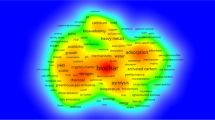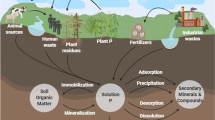Abstract
This study qualifies and quantifies the effects of pH, hardness, alkalinity, salinity and bone calcination temperature related with the adsorption of As(V) onto biogenic hydroxyapatite (HAPb) obtained from cow-charred bones. Arsenic contamination of surface and subsurface waters is widely extended in Argentina. It is a problem of major concern, particularly in rural and suburban areas where there are not water treatment plants for supplying of drinking water. HAPb is a natural material, whose absorbent properties can be used for the design of low-cost technologies for As(V) abatement in water. In this work HAPb has been characterized by physical and chemical analysis (XRD, SEM, EDAX, BET, and electrophoretic mobility). A Plackett–Burman screening experimental design allowed us to determine the main variables affecting the efficiency of As(V) sorption onto HAPb. Based on these variables and with a design of higher order we developed a model of the system to study its behaviour. Data collection was planned through a Doehlert experimental design and a back propagation artificial neural network was used to work it out. Results showed that salinity is the major variable affecting the efficiency of the As(V) immobilization process but pH and hardness should be taken into account because of associations among them.




Similar content being viewed by others
References
Bostick, W. D., Stevenson, R., Jarabek, R., & Conca, J. L. (2000). Use of apatite and bone char for the removal of soluble radionuclides in authentic and simulated DOE groundwater. Advances in Environmental Research, 3, 488–498.
Bourne, G. H. (Ed) (1971). The biochemistry and physiology of bone. In Development and Growth, Volume 3. New York, USA: Academic.
Carreras, M. A., Bianco de Salas, G., Ponce, R., Farías, S., Bovi Mitre, G., & Servant, R. (2003, October). Contaminación natural de aguas subterráneas con fluor en la provincia de Jujuy. In VI Congreso SETAC Latinoamérica (pp. 37–38). Buenos Aires, Argentina: PMA.
Conca, J. L., Lu, N., Parker, G., Moore, B., Adams, A., Wright, J. V., et al. (2000). PIMS-remediation of metal contaminated waters and soils. In G. B. Wickramanayake, A. R. Gavaskar, J. T. Gibbs, & J. L. Means (Eds.), Remediation of chlorinated and recalcitrant compounds, Volume 7 (pp. 319–326). Columbus, OH: BMI.
Czerniczyniec, M., Sánchez, P., Sileo, E., & Cicerone, D. (2005, October). Uso de hidroxiapatita biogénica en la purificación de aguas arsenicales. Proceedings Congreso Binacional SAM/CONAMET (ISBN: 987-22443-0-8). Mar del Plata, Argentina: Jornadas MEMAT.
Doehlert, D. H. (1970). Uniform shell design. Applied Statistics, 19, 231–239.
Fuller, C. C., Bargar, J. R., Davis, J. A., & Piana, M. J. (2002). Mechanisms of uranium interactions with hydroxyapatite: Implications for groundwater remediation. Environmental Science & Technology, 36, 158–165.
Gómez del Río, J. A., Morando, P. J., & Cicerone, D. S. (2004). Natural materials for remediation of industrial effluents: Comparative study of the retention of Cd, Zn and Co by Calcite and Hydroxyapatite. Part I: Batch Experiments. Journal of Environmental Management, 71, 169–177.
Ley N° 18284, Decreto N° 4238/68, & Decreto N° 815/99, (1969). Código Alimentario Argentino.
Leyva, A., Marrero, J., Smichowski, P., & Cicerone, D. (2001). Sorption of antimony onto hydroxyapatite. Environmental Science & Technology, 26, 3669–3675.
Massart, D. L., Vandeginste, B. G., Buydens, L. M., De Jong, S., Lewi, P. J., & Smeyers-Verbeke, J. (1997). Handbook of chemometrics and qualimetrics Part A, (pp. 697–698). Ámsterdam, The Netherlands: Elsevier.
Nicolli, H., Connor, T., Suriano, J., Koukharsky, M. M., Gómez Peral, M. A., Bertini, L. M., et al. (1985). Geoquímica del as y otros oligoelementos en aguas subterráneas de la llanura sudoriental de la Provincia de Córdoba, Academia Nacional de Ciencias. Córdoba, Argentina: Miscelánea N°71.
Plackett, R. L., & Burman, J. P. (1943–1946). Biometrika, Volume 33 (pp. 305–325). Cambridge, UK: University Press.
Sharaf, M. A., Illman, D. L., & Kowalski, B. R. (1986). In P. J. Elving, J. D. Winefordner, & I. M. Kolthoff (Eds.), Chemical analysis (pp. 119–147). New York, USA: Willey.
US Environmental Protection Agency (2000). Technologies and costs for removal of arsenic from drinking waters (EPA 815-R-00-028).
Zupan, J., & Gasteiger, J. (1999). Neural networks in chemistry and drug design (pp. 380–381). Weinheim, Germany: Wiley–VCH.
Acknowledgments
Project “Estudios Medioambientales”, P5-PID 36-4, CNEA and PICT07-12122 ANPCyT. Mariela Czerniczyniec (MC) was supported by SOLWATER Project ICA4-CT2002-10001 and ANPCyT Project PICT07-12122. MC is a PhD student of Universidad Nacional de General San Martín (PhD in Science and Technology, Chemistry).
Author information
Authors and Affiliations
Corresponding author
Rights and permissions
About this article
Cite this article
Czerniczyniec, M., Farías, S., Magallanes, J. et al. Arsenic(V) Adsorption onto Biogenic Hydroxyapatite: Solution Composition Effects. Water Air Soil Pollut 180, 75–82 (2007). https://doi.org/10.1007/s11270-006-9251-6
Received:
Accepted:
Published:
Issue Date:
DOI: https://doi.org/10.1007/s11270-006-9251-6




